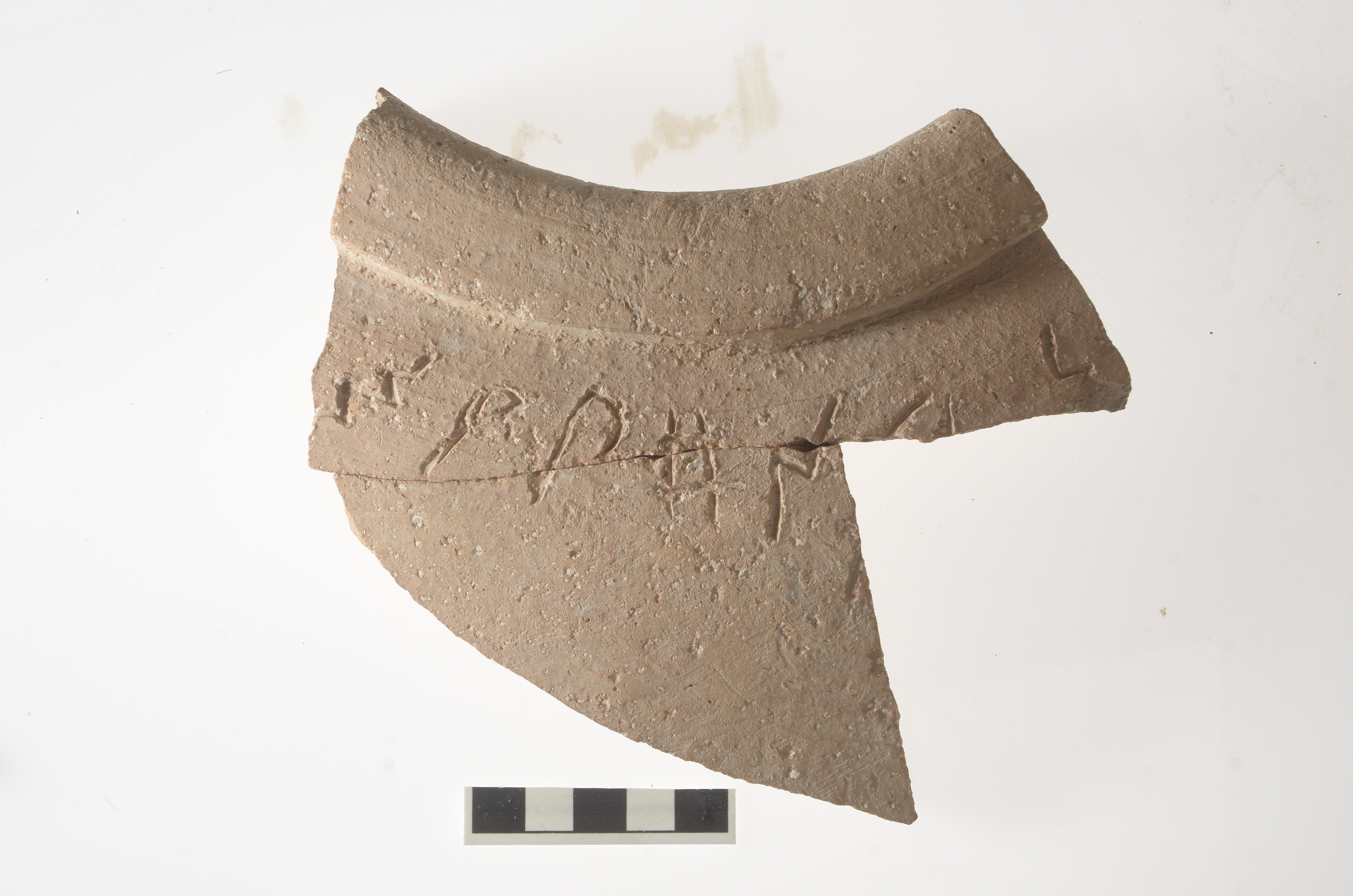
A shard of pottery unearthed near the Temple Mount in Jerusalem bears an inscription that dates to the 10th century B.C.
The inscription is the oldest alphabetic text found in Jerusalem and predates the earliest found Hebrew inscription in the region by 250 years.
The enigmatic letters, which wrap around the top of a neck-less ceramic jar, were written around the time of King David or King Solomon's reign in an early form of Canaanite, not Hebrew. As a result, archaeologists believe a Jebusite or some other non-Israelite tribe member wrote the inscription.
At that time, the Israelites hadn't yet conquered the region, and Hebrew was not the dominant language of the day. [Photos: A Walk Through Israel's Old Jaffa]
The findings are published in the current issue of the Israel Exploration Journal.
The area around Jerusalem is teeming with archaeological relics. An 11th century B.C. temple found near Jerusalem reveals evidence of fighting between Canaanites, Israelites and Philistines. And an ancient royal garden in the hills above Jerusalem was recently revived. In addition, an ancient seal depicting a man fighting a lion and possibly referencing the Biblical tale of Samson was discovered at Beth Shemesh, an archaeological site about 12 miles (20 kilometers) west of Jerusalem. That seal dates to the 12th century B.C., and was described last year by Tel Aviv University archaeologists.
The pottery was found underneath the second floor of a 10th-century B.C. building near the southern wall of the Temple Mount. The ceramics were probably used as fill for the building.
Sign up for the Live Science daily newsletter now
Get the world’s most fascinating discoveries delivered straight to your inbox.
The fragment was found along with pieces of six other jars of its type. The writing, which included letters about 1 inch (2.5 centimeters) tall, was inscribed into the jar before it was fired, and all the pottery pieces were likely made from clay that originated in the hills around Jerusalem.
However, the ceramic shard has just the tail end and the very beginning of the inscription left, just seven letters in all, and the meaning of those letters remains a mystery. The combination of phonetic letters has no meaning in any known languages of the region. The archaeologists suspect the inscription bears the name of the owner or the contents of the jar.
This excavation and others at the site, which is a national park open to the public, involve the Israel Antiquities Authority, the Israel Nature and Parks Authority, and the East Jerusalem Development Company.
Follow Tia Ghose on Twitterand Google+. Follow LiveScience @livescience, Facebook & Google+. Original article on LiveScience.com.

Tia is the managing editor and was previously a senior writer for Live Science. Her work has appeared in Scientific American, Wired.com and other outlets. She holds a master's degree in bioengineering from the University of Washington, a graduate certificate in science writing from UC Santa Cruz and a bachelor's degree in mechanical engineering from the University of Texas at Austin. Tia was part of a team at the Milwaukee Journal Sentinel that published the Empty Cradles series on preterm births, which won multiple awards, including the 2012 Casey Medal for Meritorious Journalism.









